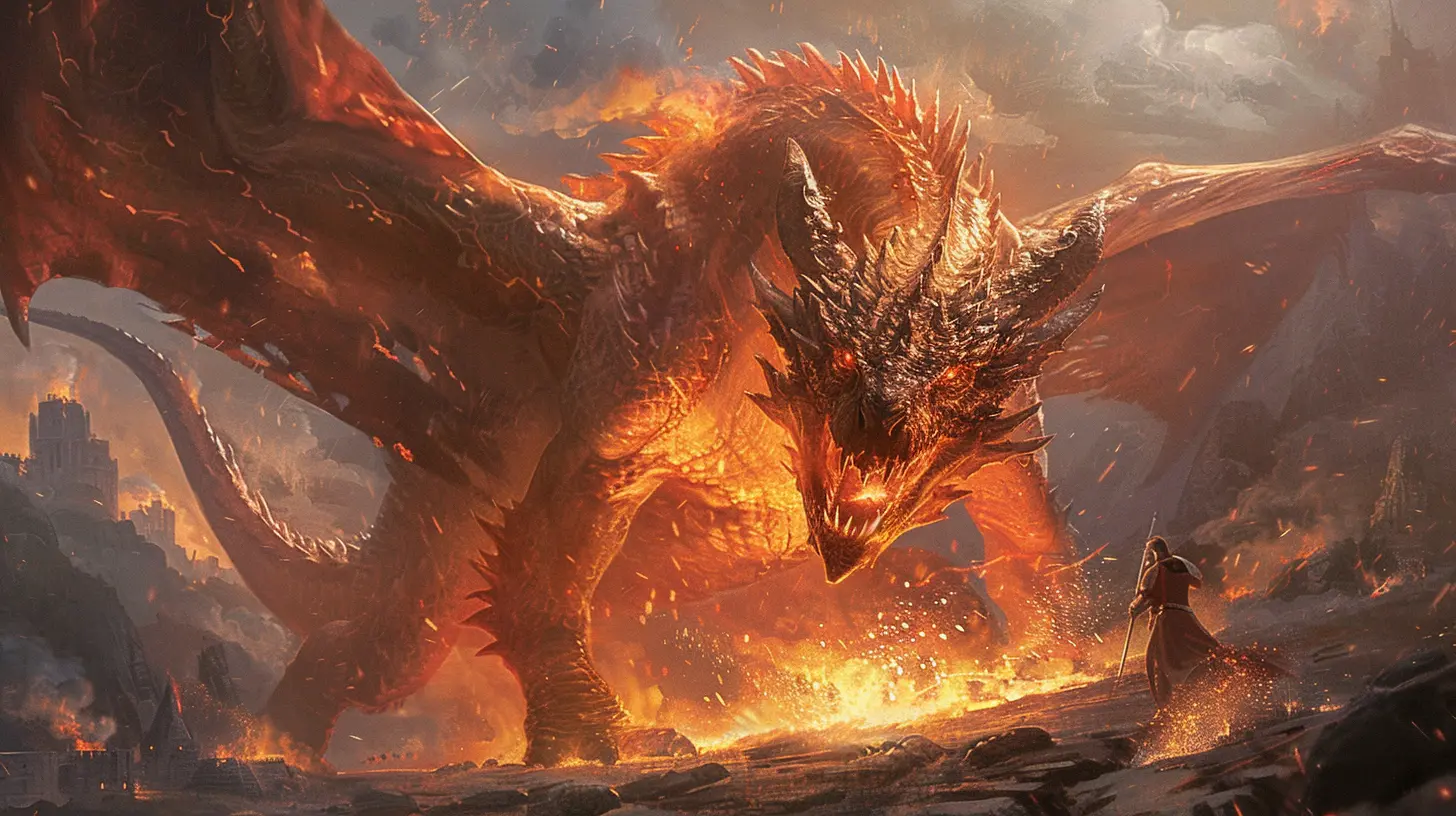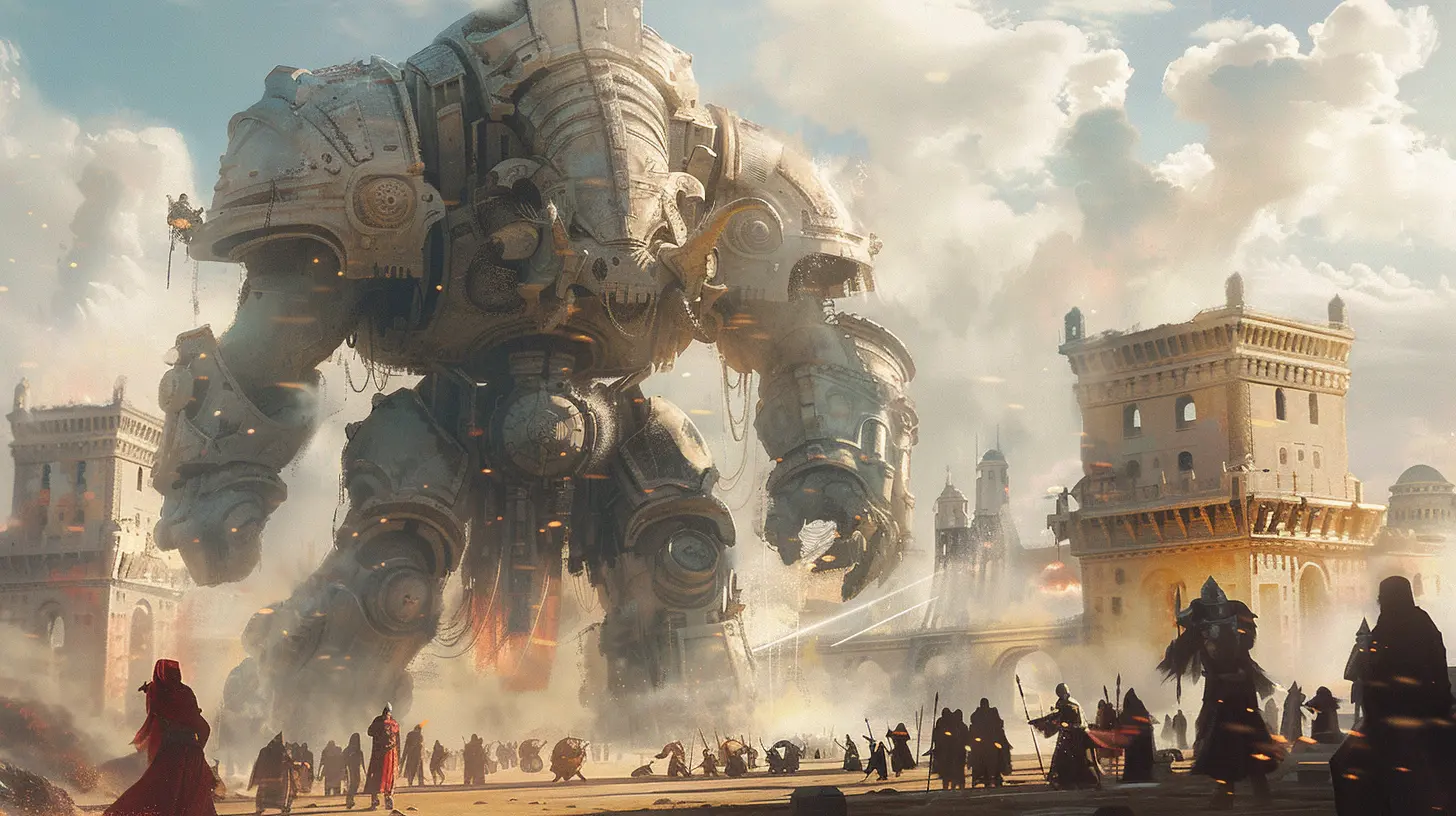The Role of Art & Design in Modern Tabletop Games
1 November 2025
If you're anything like me, you’ve probably marveled at some of the absolutely stunning designs and art in tabletop games today. Whether it’s an intricate game board, beautifully illustrated cards, or finely crafted miniatures, the art and design of modern tabletop games have reached a whole new level. But have you ever stopped to think about just how important these visual and design elements are? Let’s dive into the role art and design play in modern tabletop games and why they’ve become such pivotal aspects of the gaming experience.

The Evolution of Tabletop Game Art: From Function to Emotion
Think back to the classic games we grew up with—Monopoly, Risk, or even Scrabble. Were they fun? Sure! But let’s be honest, their visuals weren’t exactly memorable. Back then, art in games was more about function than form. Boards had grids, cards had text, and the pawns were… well, pawns. The focus was solely on gameplay mechanics, and the visual side was sometimes treated as an afterthought.Fast forward to today, and modern games like Gloomhaven, Wingspan, and Azul are like miniature works of art. What changed? A lot, actually. In a world where competition for attention is fiercer than ever, the visual appeal of a game has become a make-or-break factor. People judge a book by its cover—and a game by its box art. Designers and artists now collaborate from the very beginning of game development to ensure that the visuals and mechanics complement each other perfectly. It’s no longer just about how the game is played; it’s about how it feels, looks, and even tells a story.

First Impressions Matter: Art as the Hook
Let’s face it: when you’re browsing through board games at your local game store or scrolling through Kickstarter, the first thing that grabs your attention isn’t the rules—it’s the art. Whether it’s bold colors, intricate details, or a unique visual style, the art is what makes you stop and say, “Oh, what’s this?”Good game art doesn’t just look pretty—it communicates what the game is about. A dark, brooding design hints at a tense, strategic experience (think Arkham Horror). Bright, whimsical illustrations suggest a lighthearted, family-friendly vibe (like Dixit). Great art speaks to the theme and tone of the game, acting as a promise of what’s to come.
Think of game art as the handshake at a first meeting. If it’s confident and engaging, you’re more likely to stick around and get to know the game better. Without it, even the best gameplay mechanics might go unnoticed.

Immersion: Making the Game World Come Alive
Ever played a game where it felt like you were transported to another world? That’s the power of immersive design. Art and design help bridge the gap between a collection of game pieces on your table and a full-blown adventure in your imagination.Take a game like Scythe, for example. Its stunning artwork and alternate-history aesthetic don’t just set the stage—they plunge you into a world of giant mechs and post-war struggles. Every illustration, every card, and even the game board itself tells a story. The same goes for games like Everdell, where the charming woodland creatures and lush visuals make you feel like you’re part of a whimsical fairytale.
Immersion isn’t just about pretty pictures—it’s about cohesion. The art, components, and even the typography all need to work together seamlessly to create a believable world. When art and design are done right, they make the gameplay experience feel like something more than just rolling dice or shuffling cards. They make it an adventure.

Accessibility: Designing for Clarity and Usability
Art isn’t just about wowing players—it also plays a critical role in making games easy to understand and play. Ever sat down to learn a game, only to feel overwhelmed by confusing rules or a cluttered board? Yeah, we’ve all been there. Good design can make or break how accessible a game is, especially for new players.A well-designed game uses visuals to guide players intuitively. Icons, color coding, and consistent layouts can communicate complex mechanics without the need for endless rule-checking. Take Ticket to Ride, for example. Its clean design and clear iconography make it simple to learn, even for first-time players. You almost don’t realize how much thought went into every element, because it just feels natural.
On the flip side, poorly designed games can feel like a chore. If the art is too busy or the components are hard to read (looking at you, tiny text on cards), the gameplay experience suffers. Great art and design aren’t just about aesthetics—they’re about functionality too.
Emotional Engagement: Connecting Players to the Game
Let’s talk about feelings. Because at the end of the day, games are all about evoking emotions—whether it’s excitement, suspense, or even nostalgia. Art and design have a huge impact on the emotional connection players feel with a game.Take Wingspan as a shining example. Part of what makes this game so beloved is its gorgeous bird illustrations. Each card feels like a mini piece of art, and you can tell the designers put their hearts into it. The result? Players don’t just feel like they’re playing a game—they feel like they’re building a sanctuary for birds. That emotional connection keeps them coming back for more.
Similarly, the minimalist yet evocative design of games like The Mind or Codenames taps into player creativity and imagination. Sometimes less is more, and clever use of design can spark just as much emotion as a highly detailed illustration.
Art as a Selling Point: The Rise of Collectibility
Here’s a fun fact: tabletop games have become collectors’ items thanks to their art and design. People aren’t just buying games to play them—they’re buying them to display them. Limited editions, deluxe components, and standout artwork have turned games into coveted pieces of art.This collectibility factor has been amplified by platforms like Kickstarter, where creators can showcase luxurious components like embossed boards, custom dice, and intricately sculpted miniatures. Games like Kingdom Death: Monster and Gloomhaven have set the bar high, proving that players are willing to invest in games that deliver both great gameplay and stunning design.
Collaboration: The Unsung Heroes Behind the Scenes
While we often credit game designers for their brilliant mechanics, let’s not forget the artists, graphic designers, and illustrators who bring those concepts to life. Modern tabletop games are a collaborative effort, and the synergy between mechanics and visuals is what truly makes a game shine.In recent years, we’ve also seen more artists gaining recognition and even being featured as part of a game’s marketing. Names like Andrew Bosley (Everdell) or Jakub Rozalski (Scythe) are now celebrated in gaming communities, and rightfully so. Their contributions are just as crucial to a game’s success as the rules themselves.
The Future of Art and Design in Tabletop Games
So, where do we go from here? With advancements in technology, we’re likely to see even more innovative uses of art and design in games. Augmented reality components, app-integrated gameplay, and 3D printing are already starting to blur the lines between traditional board games and digital experiences.But one thing is clear: art and design will always remain central to the evolution of tabletop gaming. As new creators push boundaries and explore fresh styles, the potential for visual storytelling in games is limitless.
Final Thoughts
At the heart of it all, tabletop games are about bringing people together. And while great mechanics are key, it’s the art and design that make those moments shared around the table unforgettable. Whether you're drawn in by a beautifully illustrated game board or captivated by the narrative told through a deck of cards, art and design play a starring role in making games more than just games—they’re experiences.So, the next time you pick up a game and admire its stunning visuals, take a moment to appreciate the countless hours of creativity and passion that went into it. Because in the world of tabletop gaming, art and design aren’t just extras—they’re essentials.
all images in this post were generated using AI tools
Category:
Tabletop GamesAuthor:

Lana Johnson
Discussion
rate this article
1 comments
Katherine Strickland
Art and design are the lifeblood of modern tabletop games. They transcend mere aesthetics, forging emotional connections and immersive experiences. Without striking visuals and thoughtful design, games become forgettable. Stop underestimating the power of art—it's not just a backdrop; it's a catalyst for unforgettable adventures and meaningful interactions at the table.
November 1, 2025 at 4:23 PM

Lana Johnson
Absolutely! Art and design are essential in tabletop games, enhancing emotional engagement and creating memorable experiences that elevate gameplay.


